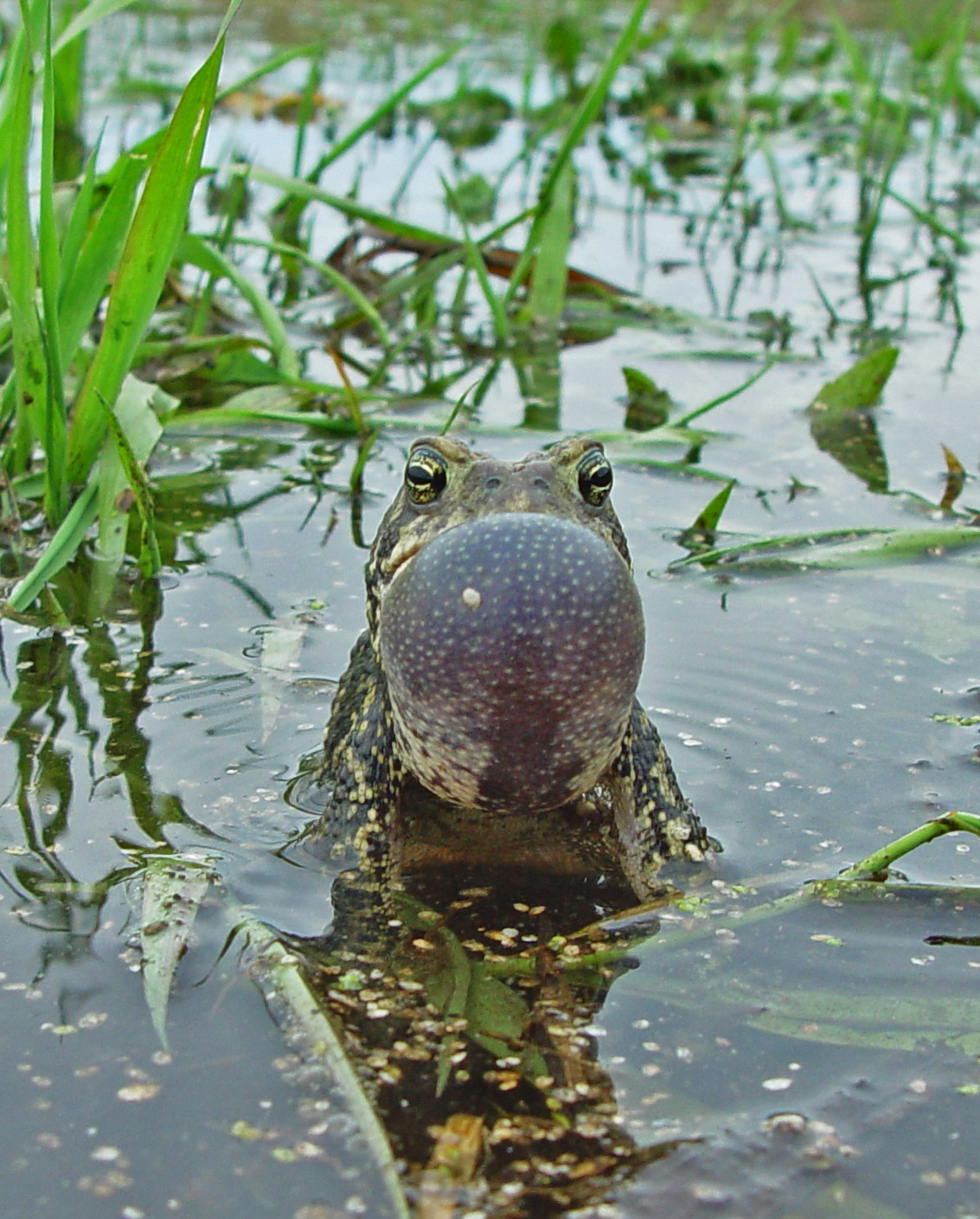Springtime in the Midwest!
Just after sunrise, on an early spring morning, we are out of the truck and snowshoeing across a frozen bog in north-central Wisconsin. Our goal is to capture the sounds of calling frogs. We place automatic recording units on the edges of small, forested wetlands before they thaw, and before the frogs emerge from their winter hibernation spot for spring breeding. These small green boxes have microphones and battery packs and are programmed to take a 5-minute audio recording every hour until fall. When we retrieve the memory cards from the units, they give us an audio picture of frog calling activity from the first thaw to the first freeze each year.
Despite frozen conditions at most sites up north, many frogs in the upper Midwest haven’t been waiting for spring to awake. We started hearing boreal chorus frogs, spring peepers, and wood frogs in early March, just as the ice on the ponds was starting to melt. A few weeks later, in early April, leopard frogs were heard calling in the ponds. These frogs spent the winter under the ice, hibernating on the bottom of the pond. Wood frogs spend the winter under the leaves on the forest floor, but as soon as the snow starts to melt, they head for the nearest pond to find a mate and lay their eggs. Their calling peaks around this time, with an almost deafening chorus of singing male wood frogs beginning as soon as the temperatures rise to a few degrees above freezing. The male frogs sing to attract and impress female frogs. If a male frog hits the right notes, he could be chosen by a female frog to mate.
A few weeks later, when the ice melts, we will return to these shallow wetland sites to place a water-depth sensor in the deepest part of the pond so that we know how water levels change during the year. There is plenty of water now and the frogs are still calling, but these sites often dry at some point during the summer or fall. Water depth is important, and so is how long water stays in the wetland. When sites dry, fish can’t survive and many frog species need these fish-free ponds to keep their eggs and tadpoles safe. On the other hand, water needs to persist long enough for tadpoles to metamorphose into adults.
Our early spring species will call for only a few weeks, but later in the spring we start to hear eastern gray treefrogs and green frogs, some of which will continue calling into late July. Through the years, this work has taught us about rainfall patterns and the spring thaw, characteristics that affect the timing and intensity of amphibian calling.
Amphibian Week is almost here and if you want to learn more about amphibians in the Midwest, Join us for an Amphibian Walk! There will be a guided walk in La Crosse, Wisconsin, on the evening of May 7, 2025 (link). Come to hear and (hopefully) see some local Midwest amphibians.
--Be sure to check out Amphibian Week - ARMI, Amphibian Week 2025 - PARC for national and international events (in person and virtual).

